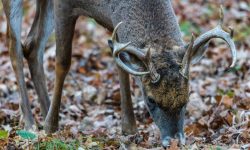Zebras are iconic grazers of Africa’s grasslands, known for their striking black-and-white stripes and their tightly bonded herds. While they may seem simple in their feeding habits, zebras have one of the most important ecological roles of any large herbivore. Understanding what zebras eat reveals how they survive harsh dry seasons, migrate across vast savannas and maintain impressive endurance in predator-filled landscapes.
Zebras are highly adaptable herbivores that rely on grasses, shrubs, herbs and seasonal vegetation. Their digestive system is designed for processing tough, fibrous plants that many other animals avoid. By consuming coarse grasses and moving constantly across the savanna, zebras maintain the balance of many ecosystems and open paths for other species to feed.
This guide explores 20 wild foods zebras rely on, offering deeper insight into how they graze, what drives their seasonal movements and how these foods support their survival throughout Africa’s ever-changing environments.
Understanding the Zebra Diet

Zebras are hindgut fermenters, meaning they digest food in a large, specialized cecum where bacteria break down tough fibers. Unlike ruminants such as cows or wildebeests, zebras do not chew cud. Instead, they rely on fast, efficient digestion that allows them to consume large quantities of plant material quickly.
Their feeding behavior focuses on constant grazing. Zebras spend up to 70% of their day searching for food, eating whatever grasses or herbs are available. This constant feeding supports their high energy demands, especially during migration or when evading predators.
Seasonal changes shape much of the zebra diet. During the wet season, they consume lush, nutrient-rich grasses. In the dry season, they shift to stems, shrubs, bark and hardy vegetation. Their ability to digest low-quality food better than many antelope species gives them a major survival advantage during periods of scarcity.
Because zebras move in large herds, they can reshape entire landscapes, reducing tall grass for other grazers and enriching soil with organic matter. Their diet affects ecosystems far beyond their own survival.
20 Wild Foods Zebras Rely On
1. Tall Savanna Grasses
Tall grasses dominate the African savanna and form the bulk of a zebra’s diet. These grasses grow quickly after rain, providing abundant forage.
Zebras use their large incisors to cut through tall blades efficiently. Even when grasses become dry and coarse, zebras continue eating them thanks to their specialized gut fermentation.
Tall grasses offer steady fiber and energy, sustaining large herds during daily travel.
2. Short Green Grasses
Short grasses sprout after rainfall and provide soft, nutrient-rich forage. Young shoots contain higher protein and moisture content than mature grasses.
Zebras often follow storms or seasonal rains to access these fresh patches. Their sharp teeth allow them to clip grass close to the ground, stimulating rapid regrowth.
These grasses help zebras recover from dry-season stress by supplying essential hydration and minerals.
3. Red Oat Grass
Red oat grass is one of the most nutritious savanna grasses available. It grows in large clumps that zebras prefer during the wet season.
The grass’s tender leaves and moderate protein levels support stamina, muscle maintenance and reproductive health. Zebras frequently choose it when available over coarser species.
Red oat grass becomes especially important for pregnant and nursing females.
4. Bermuda Grass
Bermuda grass spreads quickly across open plains and provides reliable forage even during dry periods. Its dense growth makes it easy for zebras to graze in large groups.
The grass contains a balance of carbohydrates and fiber that supports digestive health. Zebras often graze Bermuda grass down to low stubble.
Because it tolerates heavy grazing, Bermuda grass plays a crucial role in sustaining zebra herds.
5. Rhodes Grass
Rhodes grass produces nutritious leaves and seed heads that zebras consume throughout the growing season. It thrives in both savanna and semi-arid regions.
Zebras prefer the soft blades and readily available clusters of growth. They often graze Rhodes grass in mixed herds alongside wildebeests and gazelles.
Its persistence through warm climates makes it a key food during transitional seasons.
6. Star Grass
Star grass forms thick mats across grasslands, providing continuous forage. Zebras clip it easily due to its thin blades and shallow roots.
The grass offers moderate nutrients and moisture, making it good for daily grazing. During early dry seasons, star grass often remains green longer than other species.
Zebras rely on it heavily when mobility increases and energy demands rise.
7. Wild Barley
Wild barley produces soft shoots and edible seed heads that zebras graze when available. Although lower in protein than some grasses, it is easy to digest.
Zebras often target wild barley growing in floodplains or near seasonal rivers. Its seeds add dietary diversity during peak growth periods.
This plant becomes particularly valuable after fires, when new barley shoots emerge rapidly.
8. Shrub Leaves
When grasses begin to dry out, zebras turn to shrub leaves for additional nutrients. These leaves offer vitamins, minerals and water content that grasses lose with age.
Zebras browse lightly on shrubs such as acacia, sage and hardy savanna bushes. Their flexible lips allow selective plucking of tender leaves.
Shrub browsing becomes important during transitional drought stages.
9. Acacia Shoots
Acacia trees grow widely across African savannas, producing young shoots that zebras nibble during early growth phases. These shoots are softer and less spiny than mature branches.
Zebras reach low-growing shoots or those within shrub height. The shoots contain plant sugars and moisture that help sustain zebras during late dry-season recovery.
Acacia browsing supplements nutrients that grasses alone may lack.
10. Bush Willow Leaves
Bush willow trees produce leaves that remain green longer than most vegetation. Zebras browse these leaves when grasses decline in nutritional value.
The leaves are slightly bitter but rich in minerals. Zebras consume them in moderation, often combined with continued grazing on coarse grasses.
Bush willow leaves provide dietary stability during unpredictable rainfall cycles.
11. Herbs (Forbs)
Forbs—including wildflowers, ground herbs and soft-stemmed plants—offer zebras flavorful, nutrient-dense meals. These plants appear after rains and grow in open patches between grasses.
Zebras graze herbs selectively, often choosing them for their higher moisture and mineral content. Their bright colors and scents attract grazers.
Forbs support digestive balance and provide micronutrients missing from fibrous grasses.
12. New Grass Shoots After Fire
After controlled burns or natural fires, new grass shoots emerge quickly. These nutrient-rich sprouts attract zebra herds from long distances.
Zebras graze intensely on these fresh shoots, which contain elevated protein and carbohydrates. The regrowth also lacks the tough fibers of mature grass.
This post-fire vegetation is vital for rapid nutritional replenishment.
13. Roots (Shallow Types)
In severe drought, zebras may dig or pull shallow-rooted plants to access their moisture-rich roots. This behavior is more common in semi-arid regions.
Roots offer hydration and compact energy sources when surface vegetation disappears. Zebras target soft-rooted grasses or small herb clusters.
Though not a major food, roots help zebras survive extreme scarcity.
14. Seed Heads from Grasses
Even when grass blades dry out, seed heads remain edible. They provide starch, fiber and small amounts of protein.
Zebras often forage seed-filled tufts during late dry seasons when green plants are limited. These seeds help maintain energy levels despite reduced water intake.
Seed heads supplement diets until rains return.
15. Dry Grass (Coarse Stems)
Zebras are capable of digesting dry, fibrous grasses that many grazers avoid. Their hindgut fermentation system allows them to extract nutrients even from tough stems.
During peak drought, zebras graze on dry stems aggressively, maintaining steady feeding despite low nutrient quality. Their digestive speed helps them process large quantities efficiently.
This ability to survive on coarse material gives zebras an advantage over other species during drought.
16. Water Plants Near Streams
When herds pass through rivers or wetlands, zebras graze on soft water plants growing along banks. These plants offer high moisture content and cooling hydration.
Zebras nibble reed tips, aquatic grasses and floating vegetation. These plants are particularly important during migration when heat stress increases.
Water plants refresh zebras and support electrolyte balance.
17. Wild Melons (Moisture-Rich)
In regions like Namibia and Botswana, zebras occasionally feed on wild melons or moisture-rich desert plants. These fruits form during rainy periods and help zebras stay hydrated.
Zebras crack the melons open with their hooves or bite into soft varieties. The flesh contains sugars and significant water content.
These seasonal fruits become lifesaving hydration sources during dry spells.
18. Tree Bark (Rarely)
During severe droughts, some zebras chew soft bark from trees such as acacia or mopane. Bark contains stored plant sugars and rough fiber.
Although not part of their preferred diet, bark chewing helps zebras endure food shortages when both grasses and shrubs become unavailable.
This behavior reflects zebra adaptability in extreme conditions.
19. Fallen Leaves
Fallen leaves accumulate beneath trees and provide supplemental forage. Although dry and low in nutrients, zebras eat them when other foods are scarce.
They collect leaves by sweeping the ground with their lips, choosing softer or recently dropped foliage. Leaves help maintain stomach fill and reduce hunger stress.
This food serves as temporary relief during late drought seasons.
20. Salt-Rich Plants (Mineral Plants)
Certain plants accumulate minerals from the soil, particularly in areas with high salt content. Zebras seek these plants instinctively to satisfy mineral cravings.
Salt-rich vegetation helps maintain electrolyte balance and supports muscle function, especially during migration or heat exposure. Zebras often return to the same mineral-rich patches annually.
These plants boost overall health and complement their grass-based diet.
FAQs About What Do Zebras Eat
Are zebras herbivores?
Yes. They eat only plant-based foods.
What do zebras eat the most?
Grasses make up the majority of their diet year-round.
Do zebras eat fruit?
Occasionally, especially wild melons in arid regions.
Do zebras eat shrubs?
Yes. They browse leaves and shoots when grasses run low.
Do zebras eat tree bark?
Rarely, mostly during severe droughts.
Why do zebras migrate?
To follow fresh grasses and seasonal water sources.
Do zebras eat seeds?
Yes. Seed heads become important late in the dry season.
What gives zebras energy?
Carbohydrates from grasses and minerals from shrubs and herbs.
How long do zebras eat each day?
Up to 70% of their day is spent grazing.
Can zebras digest dry grass?
Yes. Their hindgut system allows digestion of tough, fibrous plants.
Final Thoughts
Zebras thrive in Africa’s harsh savannas thanks to their ability to graze on a wide variety of grasses, herbs, shrubs and seasonal plants. Their diet shifts naturally with rainfall cycles, helping them survive droughts, long migrations and predator pressure. Understanding what zebras eat highlights their resilience and their essential role in shaping grassland ecosystems. These powerful grazers help maintain plant diversity, support other wildlife and keep Africa’s landscapes in dynamic balance.






